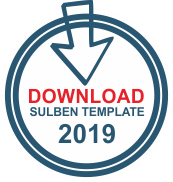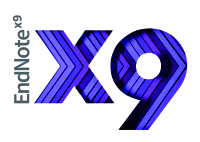Penguatan Kapasitas Pedagogi Guru Geografi Menggunakan Virtual Mikroskop Optikal Mineralogi Berbasis STEM
 ), Dipo Caesario(2), Zaky Farid Luthfi(3), Helfia Edial(4),
), Dipo Caesario(2), Zaky Farid Luthfi(3), Helfia Edial(4), (1) Universitas Negeri Padang
(2) Universitas Negeri Padang
(3) Universitas Negeri Padang
(4) Universitas Negeri Padang
 Corresponding Author
Corresponding Author
Copyright (c) 2025 Bigharta Bekti Susetyo, Dipo Caesario, Zaky Farid Luthfi, Helfia Edial
DOI : https://doi.org/10.24036/sb.06020
Abstract
Keywords
References
Anthamatten, P. (2010). Spatial Thinking Concepts in Early Grade-Level Geography Standards. Journal of Geography, 109(5), 169–180. https://doi.org/10.1080/00221341.2010.498898
Careaga-Butter, M., Badilla-Quintana, M. G., & Fuentes-Henríquez, C. (2020). Critical and prospective analysis of online education in pandemic and post-pandemic contexts: Digital tools and resources to support teaching in synchronous and asynchronous learning modalities.
Crowe, A. R., Mooney, E., & Hawley, T. S. (2018). Preservice teachers’ visions of themselves: Powerful teachers or powerful social studies teachers? Social Studies Research and Practice, 13(1), 113–126. https://doi.org/10.1108/SSRP-03-2017-0011
Freire, C. E. D. A., & Painho, M. (2014). Development of a Mobile Mapping Solution for Spatial Data Collection Using Open-Source Technologies. Procedia Technology, 16, 481–490. https://doi.org/10.1016/j.protcy.2014.10.115
Gilakjani, A. P. (2017). A Review of the Literature on the Integration of Technology into the Learning and Teaching of English Language Skills. International Journal of English Linguistics, 7(5), 95. https://doi.org/10.5539/ijel.v7n5p95
Herodotou, C., Muirhead, D. K., Aristeidou, M., Hole, M. J., Kelley, S., Scanlon, E., & Duffy, M. (2020). Blended and online learning: A comparative study of virtual microscopy in Higher Education. Interactive Learning Environments, 28(6), 713–728. https://doi.org/10.1080/10494820.2018.1552874
Liu, R., Greene, R., Li, X., Wang, T., Lu, M., & Xu, Y. (2019). Comparing Geoinformation and Geography Students’ Spatial Thinking Skills with a Human-Geography Pedagogical Approach in a Chinese Context. Sustainability, 11(20), 5573. https://doi.org/10.3390/su11205573
Mao, J., Ifenthaler, D., Fujimoto, T., Garavaglia, A., & Rossi, P. G. (2019). National Policies and Educational Technology: A Synopsis of Trends and Perspectives from Five Countries. TechTrends, 63(3), 284–293. https://doi.org/10.1007/s11528-019-00396-0
Metoyer, S. K., Bednarz, S. W., & Bednarz, R. S. (2015). Spatial Thinking in Education: Concepts, Development, and Assessment. In O. Muñiz Solari, A. Demirci, & J. Schee (Eds.), Geospatial Technologies and Geography Education in a Changing World (pp. 21–33). Springer Japan. https://doi.org/10.1007/978-4-431-55519-3_3
Misco, T. (2014). Powerful Social Studies Unit Design: A Companion to Powerful Social Studies Teaching and Learning. The Clearing House: A Journal of Educational Strategies, Issues and Ideas, 87(6), 241–248. https://doi.org/10.1080/00098655.2014.938598
Mohd Najib, S. A., Mahat, H., & Baharudin, N. H. (2020). The level of STEM knowledge, skills, and values among the students of bachelor’s degree of education in geography. International Journal of Evaluation and Research in Education (IJERE), 9(1), 69. https://doi.org/10.11591/ijere.v9i1.20416
Oyana, T. J., Garcia, S. J., Haegele, J. A., Hawthorne, T. L., Morgan, J., & Young, N. J. (2015). Nurturing Diversity in STEM Fields through Geography: The Past, the Present, and the Future. 16(2).
Tetley, M. G., & Daczko, N. R. (2014). Virtual Petrographic Microscope: A multi-platform education and research software tool to analyse rock thin-sections. Australian Journal of Earth Sciences, 61(4), 631–637. https://doi.org/10.1080/08120099.2014.886624
Whalley, P., Kelley, S., & Tindle, A. (2011). The role of the virtual microscope in distance learning. Open Learning: The Journal of Open, Distance and e-Learning, 26(2), 127–134. https://doi.org/10.1080/02680513.2011.567460
Refbacks
- There are currently no refbacks.
Copyright (c) 2025 Bigharta Bekti Susetyo, Dipo Caesario, Zaky Farid Luthfi, Helfia Edial

This work is licensed under a Creative Commons Attribution 4.0 International License.







